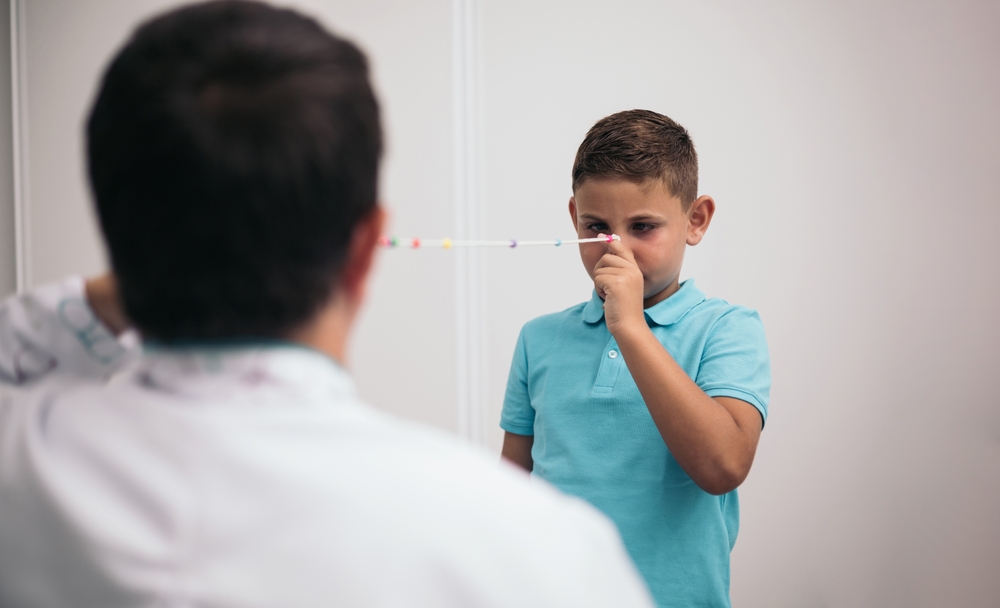
Vision plays a crucial role in a child's ability to learn, socialize, and navigate their environment. While some eye conditions are easy to detect, others may go unnoticed without a comprehensive eye examination.
Common Eye Conditions in Children
Children are susceptible to various eye conditions that can affect their vision and overall well-being. One common condition is amblyopia, commonly known as lazy eye. Amblyopia occurs when one eye is weaker than the other, leading the brain to favor the stronger eye and ignore visual input from the weaker eye. This can result in poor depth perception and coordination. If your child frequently bumps into objects, has difficulty catching a ball, or covers one eye while reading or watching television, they may have amblyopia.
Strabismus is another eye condition that affects children. It is characterized by misalignment of the eyes, causing one eye to turn inward, outward, upward, or downward. Strabismus can lead to double vision, poor eye teaming skills, and reduced visual acuity. If your child's eyes appear misaligned or they complain of double vision, an eye misalignment may be the cause.
Signs Your Child May Benefit from Vision Therapy
If you notice any of the following signs in your child, they may benefit from vision therapy:
- Frequent headaches or eye strain: Children with vision problems often experience headaches or eye strain due to the extra effort required to focus on objects.
- Avoidance of reading or close work: If your child dislikes reading or complains of fatigue while doing close work, it may be a sign of an underlying vision problem.
- Poor hand-eye coordination: Difficulty catching a ball, clumsiness, or struggling with activities that require hand-eye coordination may be indicative of visual processing issues.
- Skipping lines or losing place while reading: Children with vision problems may have difficulty tracking lines of text, resulting in skipping or losing their place while reading.
- Squinting or covering one eye: Excessive squinting or covering one eye while performing tasks may indicate a vision problem that needs attention.
- Struggling with depth perception: If your child frequently misjudges distances or has trouble with activities involving depth perception, it may be a sign of an underlying vision issue.
Benefits of Vision Therapy for Children
Vision therapy offers numerous benefits for children with vision problems. It is a customized treatment plan designed to improve visual skills and correct specific vision issues. Here are some benefits of vision therapy:
- Improved visual acuity: Vision therapy can enhance visual acuity, allowing children to see objects clearly at various distances.
- Enhanced eye teaming and tracking: Children with vision problems often struggle with eye teaming and tracking skills. Vision therapy exercises can help improve these skills, leading to better reading comprehension and coordination.
- Better depth perception: Vision therapy can enhance a child's depth perception, allowing them to accurately judge distances and navigate their environment with confidence.
- Reduced eye strain and fatigue: By improving visual skills, vision therapy can alleviate eye strain and fatigue often experienced by children with vision problems.
- Improved academic performance: With improved visual skills, children can better focus on their schoolwork, leading to improved academic performance and confidence.
Schedule Your Child’s Vision Therapy Consultation at Rieger Eyecare Group Today
As a parent, it is essential to be aware of the signs that your child may need vision therapy. Common eye conditions in children, such as refractive errors, amblyopia, and strabismus, can significantly impact their visual skills and overall development. Early detection and treatment are key to preventing further complications and ensuring optimal visual health for your child.
If you have noticed any signs that your child may benefit from vision therapy, visit Rieger Eyecare Group at our office in Normal, Illinois, or call (309) 320-2020 to schedule an appointment today.











